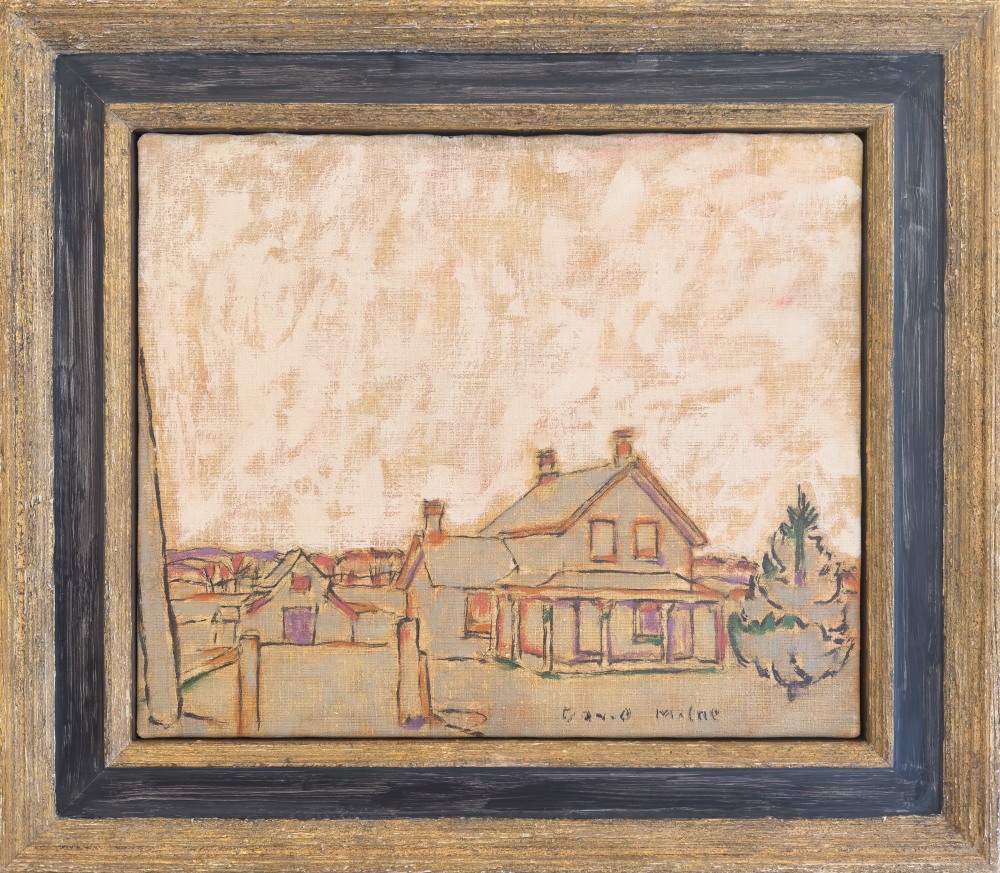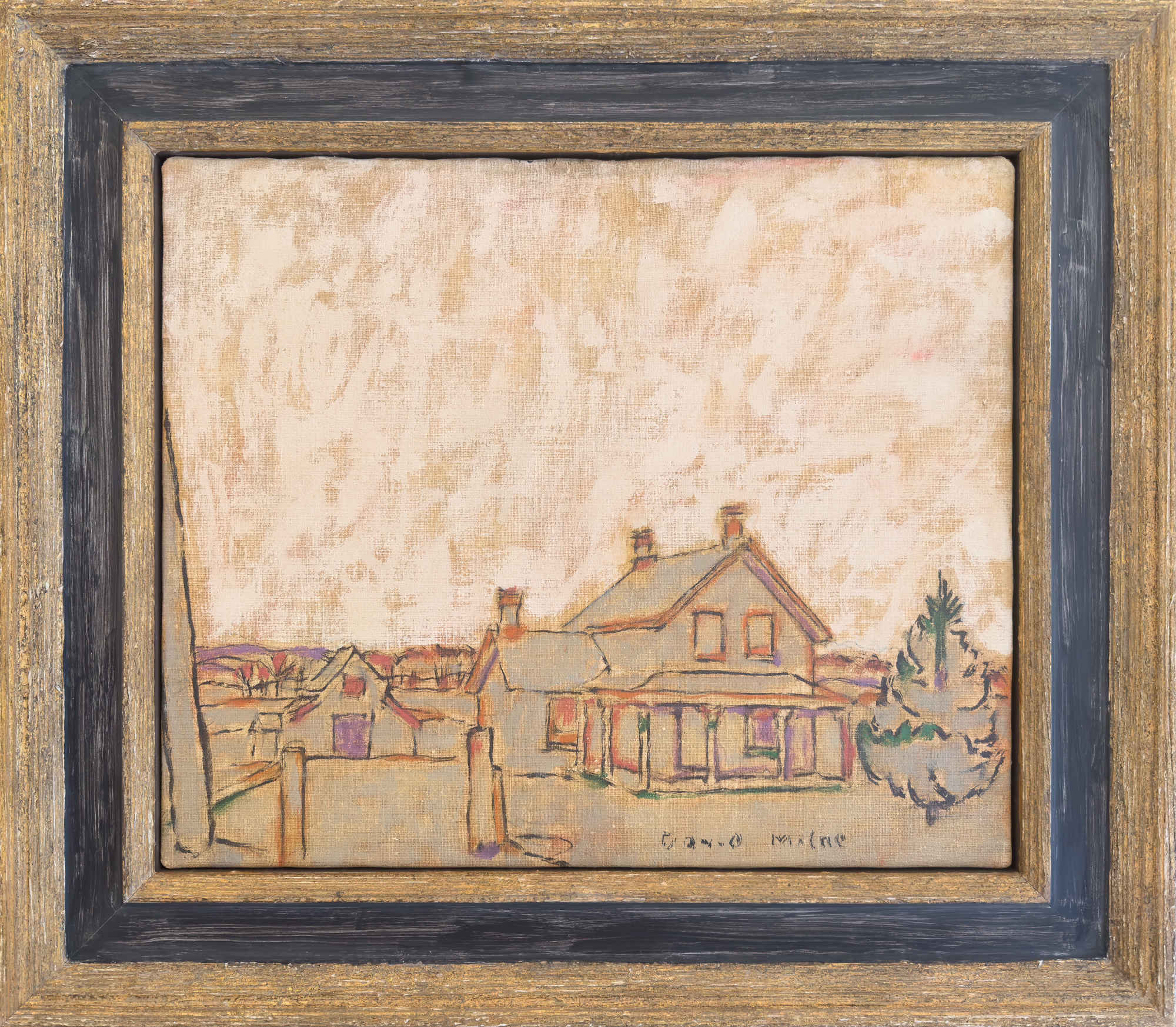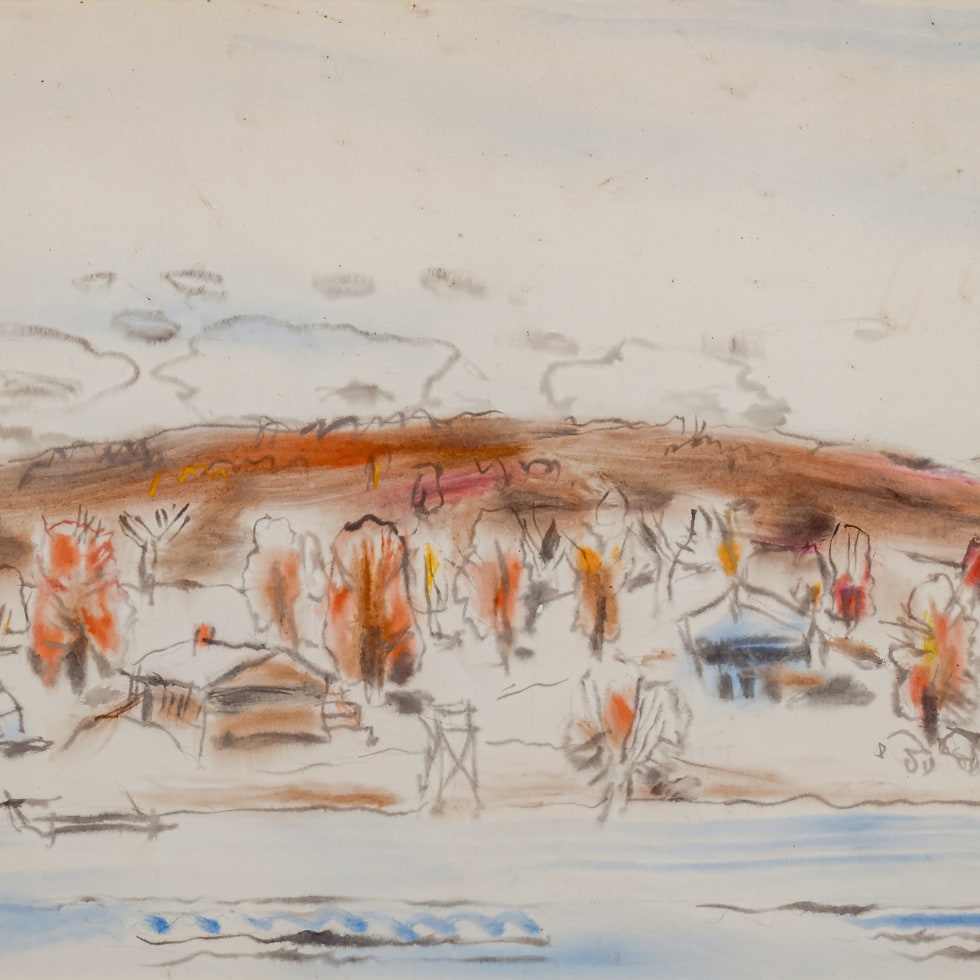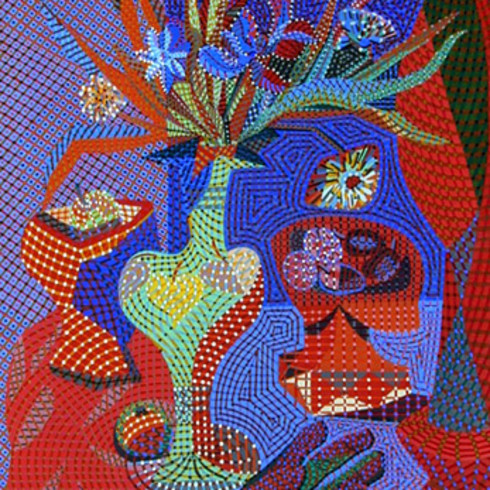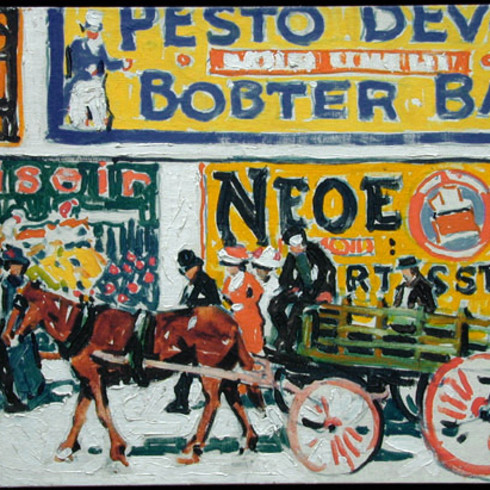Gray House, Palgrave, 1932 (circa)
50.8 x 59.7 cm
This work is included in the David B. Milne Catalogue Raisonné of the Paintings compiled by David Milne Jr. and David P. Silcox, Vol. 2: 1929 - 1953, p. 529, no. 302.104.1.
Inscriptions
signed, probably in 1935, 'David Milne' (lower right); inscribed, ‘112 / 151A’ (verso)Provenance
Purchased from the artist by Vincent Massey, 1934
Laing Galleries, Toronto, 1958
Mr. Peter Bronfman, Toronto, 1968
Waddington Galleries, Montreal, 1978
Private collection, Ontario
Heffel Fine Art Auction House, Fine Canadian Art, 26 November 2015, lot no. 114Private collection, Toronto
Expositions
Montreal, Waddington Galleries, Canadian Masters, June 8 - July 1, 1978.
Documentation
David Milne Jr. and David P. Silcox, David B. Milne: Catalogue Raisonné of the Paintings, Volume 2: 1929 - 1953 (Toronto: University of Toronto Press, 1998). 529 [reproduced].Admiring Gray House, Palgrave, 1932 (circa) one is reminded of a keen observation made by a highly distinguished colleague, the late Blair Laing, a gentleman who knew David Milne personally, offered them to his best clients enthusiastically and who sold Gray House, Palgrave in 1958. In selecting David Milne as #5 in his list of Canada's 10 greatest artists, he wrote, "One of his aesthetic theories was that all but the essential elements of a composition should be omitted. He called it a shorthand style."[1] This entire absence of detail and fussiness "speaks" volumes to the composition and the accomplishment we see in Gray House
David Milne was one of Canada’s great artist-luminaries, an accolade he shares with artists such as J.W. Morrice, Maurice Cullen, Tom Thomson and Lawren Harris.
David Milne moved to Palgrave, Ontario in 1930, shortly after moving back from the United States. He had left for New York in 1903, and during that time he had received some acclaim. Most famously, he had participated in the famous 1913 Armory Show.
In Palgrave, Milne lived on Wallace Avenue. Gray House, Palgrave features what was one of Milne’s favourite subjects of this period, the home belonging to his across the street neighbour, Ollie Matson. The following excerpt from the catalogue raisonné documents the different versions that he painted:
Ollie Matson's house: This house stood on Wallace Avenue almost opposite the Milnes’ and Milne’s usual view is from his upstairs front window, his studio, looking towards the west. The house and shed are still standing, although, the gate is gone and trees have partly obscured the view Milne had. The versions of this subject are Black House and Shadow, 302.45, The House Is a Square Red Cloud, 302.75, Red Brick House, 302.76, Gate and Barns, 302.101, Farm House in Winter, 302.102, The Red Farm House, 302.104, Last House in the Village, 302.123, Matson’s House, 302.155, House and Shed, 302.200, and Red Windows, 302.204. The same view, but from ground level, is in Gray House, Palgrave, 302.104.1, and Ollie Matson’s House in Snow, 302.103.
Two different views of Matson’s house from the south side, rather than the east, are House and Clouds, 302.153, and Red House and Summer Clouds, 302.156. [2]
_________________________________
Footnotes:
[1] Blair G. Laing, Memoir of an Art Dealer, Vol. 2 (Toronto: McClelland and Stewart, 1982), 194.
[2] David Milne Jr. and David P. Silcox, David B. Milne: Catalogue Raisonné of the Paintings, Volume 2: 1929 - 1953 (Toronto: University of Toronto Press, 1998). 487.



